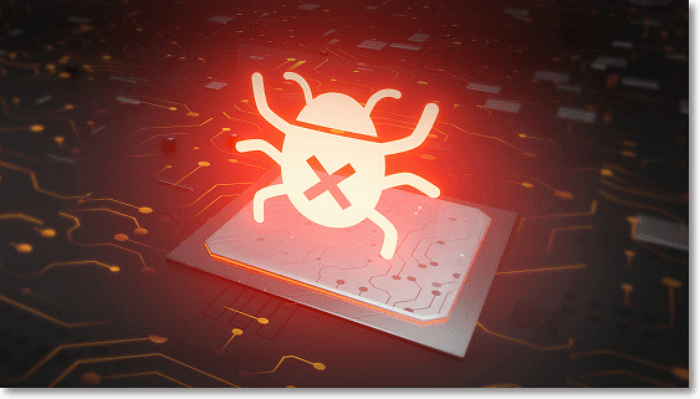When talking about malware, many people say that they hate it. But some people still don't know more about it. Malware can destroy your computer system and make your data unsafe. So, knowing comprehensively about the malware and finding out the ways to prevent its intrusion is a must-do thing.

What Is Malware?
Malware (malicious software) is a catch-all term telling all types of intrusive programs which are purposely designed by cybercriminals to destroy or exploit computer systems, Windows services, networks, or even to steal and sell users' private information. Malicious software contains viruses, worms, Trojan horses, spyware, adware, and ransomware, which are similar to the viruses in the medical field and will have a bad impact on your computer's normal function. There are many reasons why malware attacks your computer. Hackers intrude on your PC to steal your data for money; some just want to sabotage your PC and make it break down, or many others desire to reach a goal that is harmful to other people. Malware is one of the banes of cybercrimes, so all of you must know detailed information about it. When you encounter malware, you will know how to deal with it. If you long for more details, keep reading.
How to Protect Your PC Against Malware?
There is no doubt that the most efficient way to avoid malware is to prevent your computer from being infected all the time. Of course, such an aim is hard to reach. So, you need some effective methods to cope with this issue. The most common way to prevent malware is to apply anti-malware or antivirus software. It will help you a lot. TotalAV is one of the famed and reliable antivirus software that you can take a try:
 TOTALAV
TOTALAVTotalAV is an Award Winning Antivirus and Security Software. It Provides Real-Time Protection from Viruses, Malware & Online Threats.
Antivirus Protection Enabled
However, besides this way, many other choices are provided here for you. They are surely conducive to prohibiting your device from infection. Read the following items, you will know the details.
Reduction of the Attack Surface
When you work on your computer, you should minimize the systems, applications, and ports exposed to the internet to lower the risk of encountering malicious software.
User Education
Because most of the malware intrudes on your computer through spam and emails, you should be cautious about these links. You'd better not randomly click these links even if they look like authentic In this way, you can also know how malware attacks appear through insider threats.
Detection
Detecting malicious software is a necessity for users because only when you detect it, you can find a way to fix it. You should regularly update your antivirus software to improve its detection function, as some malware is difficult to detect. You should try to detect your computer to make sure that there is no virus hidden on it.
Data backup and encryption
Data security is one of the most concerning issues for computer users, for lots of personal data is saved on a PC. Therefore, protecting your data on a PC is a great way to avoid malware attacks. To ensure data security, you can back up your data and file, encrypt them, or set a password. After you complete these steps, your computer will be at low risk and it is difficult for malware to intrude on your device and damage your system.
Conclusion
From all the above, you have seen the specific description of malware. You know what it is and how it works. So, it is apparent to see its bad effect. Fortunately, effective methods to prevent malware infection have been shown, and you can select one of them when your computer encounters any intrusion of malware. I hope you can benefit from this article.
Was This Page Helpful?
Updated by Tracy King
Tracy became a member of the EaseUS content team in 2013. Being a technical writer for over 10 years, she is enthusiastic about sharing tips to assist readers in resolving complex issues in disk management, file transfer, PC & Mac performance optimization, etc., like an expert.
Related Articles
-
All Information About System Restore Explorer [Updated 2024]
 Jerry/2024-02-21
Jerry/2024-02-21 -
What Is SSD TBW and How to Check TBW on SSD
 Daisy/2024-01-11
Daisy/2024-01-11 -
What Is A DLL File and Where Are DLL Files Located in Windows 10
 Daisy/2024-01-16
Daisy/2024-01-16 -
How to Kill All the Processes in Windows 10/11
 Daisy/2024-01-11
Daisy/2024-01-11
